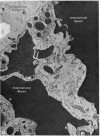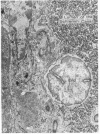Abstract
Rhesus monkeys were injected intravenously with hypertonic urea (9 ml/kg body weight of 30% urea in 10% invert sugar) and the intraocular pressure was measured with an applamatic tonometer. When this pressure reached its minimum (20% of the normal value) horseradish peroxidase (molecular weight 40,000; radius of an equivalent hydrodynamic sphere about 2.5 nm; 0.5 g/kg body weight), was injected intravenously. Twenty minutes following peroxidase administration, either aqueous humor was sampled from the anterior chamber for biochemical determination of peroxidase activity, or one eyeball was enucleated and processed for light and electron microscopic localization of the enzymatic tracer. This experiment showed that: (1) therapeutic doses of hypertonic urea do not cause a breakdown of either the blood-retina or the blood-aqueous barriers; (2) as intraocular pressure decreases, peroxidase-containing blood flows back from the episcleral veins into the Schlemm canal; (3) macromolecules up to the dimensions of horseradish peroxidase leak through the intercellular clefts of the endothelium of the Schlemm canal, permeate the juxtacanalicular connective tissue and trabecular meshwork, and finally enter the anterior chamber. Thus, blood-borne substances can circumvent the blood-aqueous barrier when intraocular pressure is decreased, and administration of a hypertonic agent may represent a simple pharmacological device to cause penetration into the ocular chambers by drugs that are normally excluded from the interior of the eye.
Full text
PDF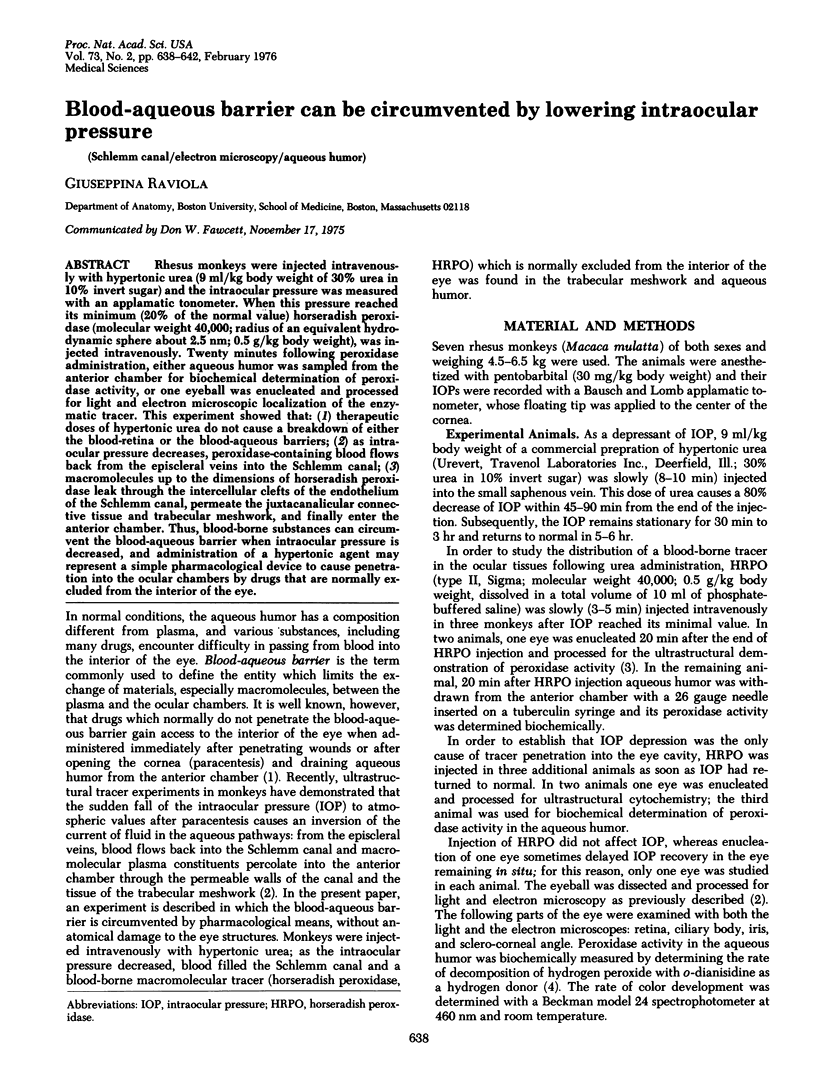

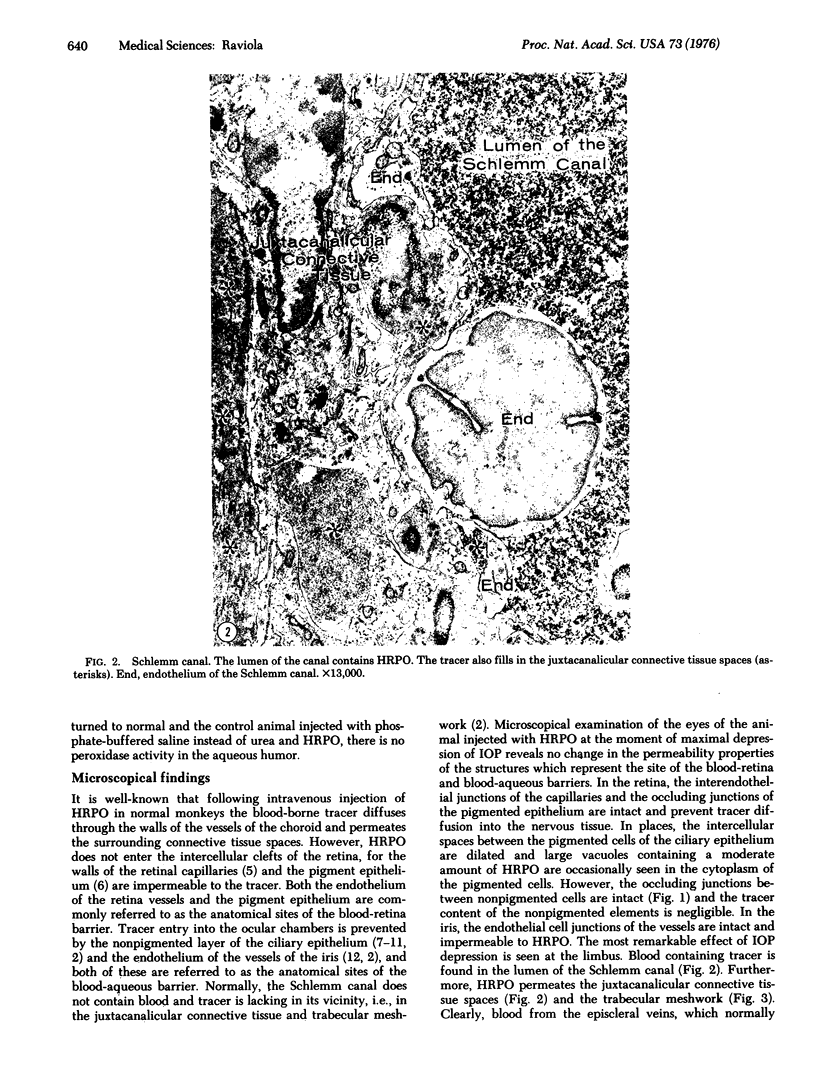
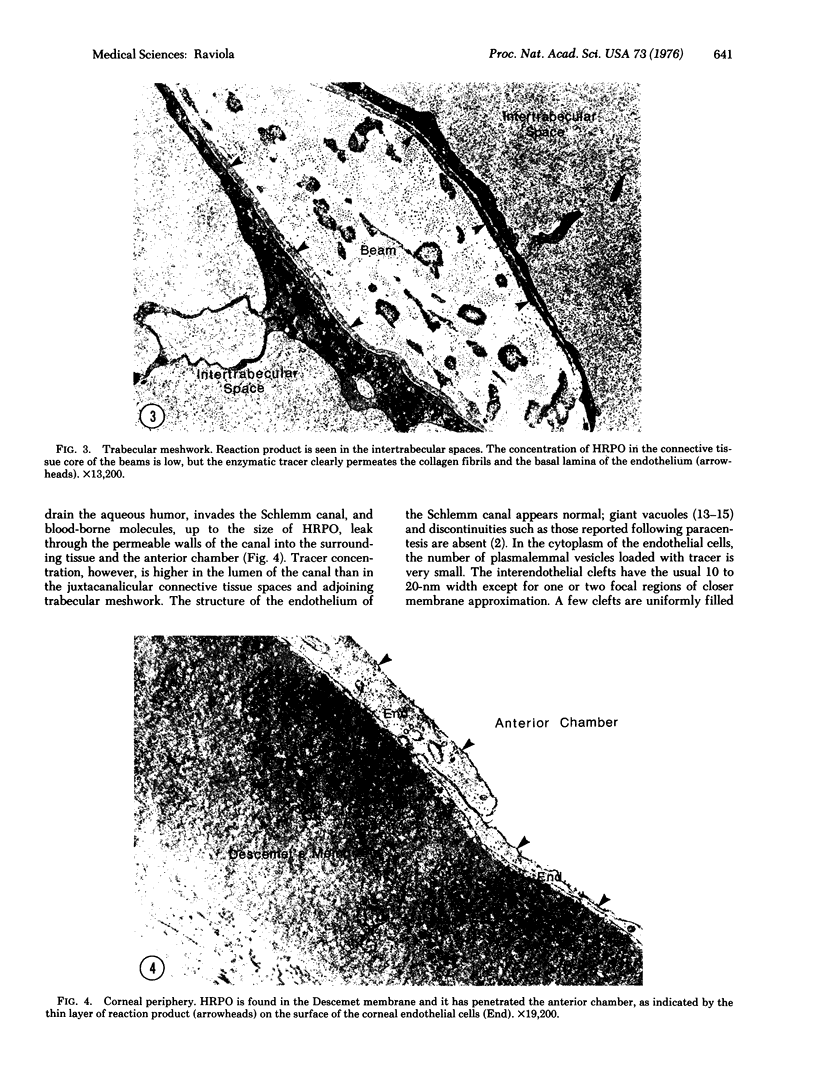
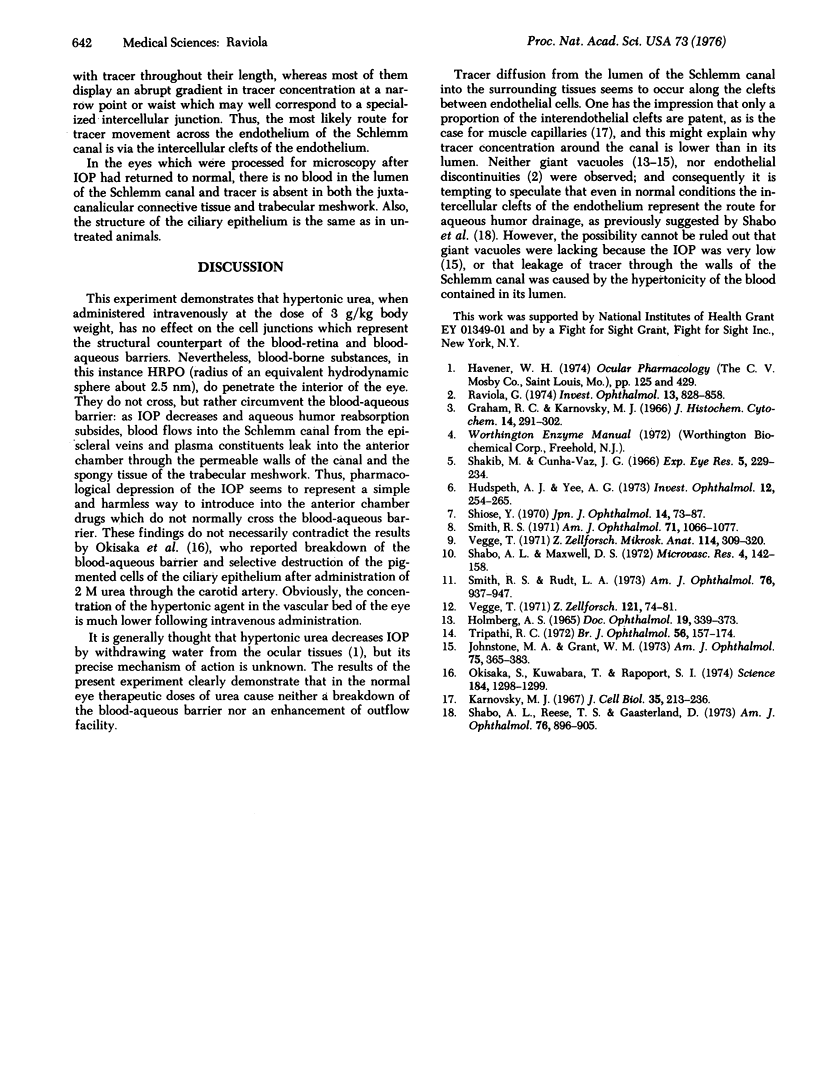
Images in this article
Selected References
These references are in PubMed. This may not be the complete list of references from this article.
- Graham R. C., Jr, Karnovsky M. J. The early stages of absorption of injected horseradish peroxidase in the proximal tubules of mouse kidney: ultrastructural cytochemistry by a new technique. J Histochem Cytochem. 1966 Apr;14(4):291–302. doi: 10.1177/14.4.291. [DOI] [PubMed] [Google Scholar]
- Johnstone M. A., Grant W. G. Pressure-dependent changes in structures of the aqueous outflow system of human and monkey eyes. Am J Ophthalmol. 1973 Mar;75(3):365–383. doi: 10.1016/0002-9394(73)91145-8. [DOI] [PubMed] [Google Scholar]
- Karnovsky M. J. The ultrastructural basis of capillary permeability studied with peroxidase as a tracer. J Cell Biol. 1967 Oct;35(1):213–236. doi: 10.1083/jcb.35.1.213. [DOI] [PMC free article] [PubMed] [Google Scholar]
- Okisaka S., Kuwabara T. Selective destruction of the pigmented epithelium in the ciliary body of the eye. Science. 1974 Jun 21;184(4143):1298–1299. doi: 10.1126/science.184.4143.1298. [DOI] [PubMed] [Google Scholar]
- Raviola G. Effects of paracentesis on the blood-aqueous barrier: an electron microscope study on Macaca mulatta using horseradish peroxidase as a tracer. Invest Ophthalmol. 1974 Nov;13(11):828–858. [PubMed] [Google Scholar]
- Shabo A. L., Reese T. S., Gaasterland D. Postmortem formation of giant endothelial vacuoles in Schlemm's canal of the monkey. Am J Ophthalmol. 1973 Dec;76(6):896–905. doi: 10.1016/0002-9394(73)90079-2. [DOI] [PubMed] [Google Scholar]
- Shakib M., Cunha-Vaz J. G. Studies on the permeability of the blood-retinal barrier. IV. Junctional complexes of the retinal vessels and their role in the permeability of the blood-retinal barrier. Exp Eye Res. 1966 Jul;5(3):229–234. doi: 10.1016/s0014-4835(66)80011-8. [DOI] [PubMed] [Google Scholar]
- Smith R. S., Rudt L. A. Ultrastructural studies of the blood-aqueous barrier. 2. The barrier to horseradish peroxidase in primates. Am J Ophthalmol. 1973 Dec;76(6):937–947. doi: 10.1016/0002-9394(73)90086-x. [DOI] [PubMed] [Google Scholar]
- Smith R. S. Ultrastructural studies of the blood-aqueous barrier. I. Transport of an electron-dense tracer in the iris and ciliary body of the mouse. Am J Ophthalmol. 1971 May;71(5):1066–1077. [PubMed] [Google Scholar]
- Tripathi R. C. Aqueous outflow pathway in normal and glaucomatous eyes. Br J Ophthalmol. 1972 Mar;56(3):157–174. doi: 10.1136/bjo.56.3.157. [DOI] [PMC free article] [PubMed] [Google Scholar]
- Vegge T. An electron microscopic study of the permeability of iris capillaries to horseradish peroxidase in the vervet monkey (Cercopithecus aethiops). Z Zellforsch Mikrosk Anat. 1971;121(1):74–81. doi: 10.1007/BF00330918. [DOI] [PubMed] [Google Scholar]
- Vegge T. An epithelial blood-aqueous barrier to horseradish peroxidase in the ciliary processes of the vervet monkey (Cercopithecus aethiops). Z Zellforsch Mikrosk Anat. 1971;114(3):309–320. doi: 10.1007/BF00331458. [DOI] [PubMed] [Google Scholar]



